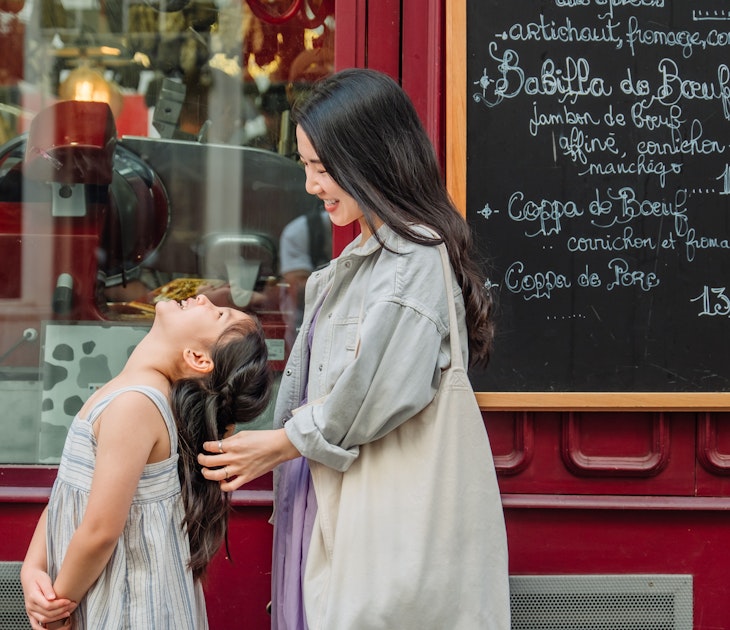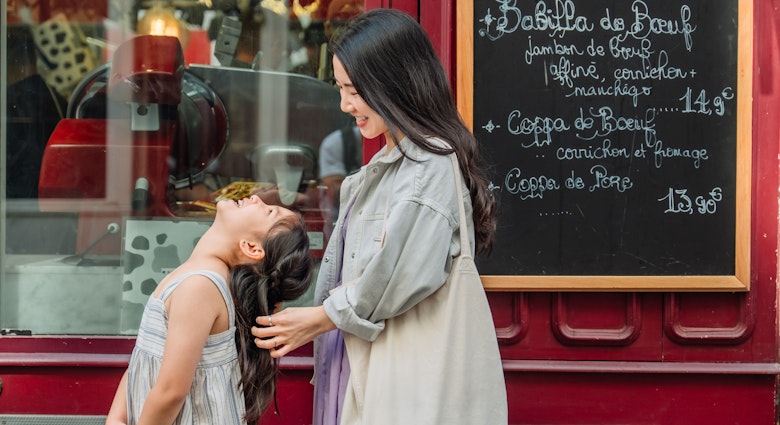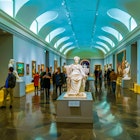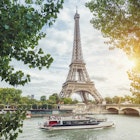Rooksana Hossenally is one of the authors of the new Lonely Planet Paris guidebook. Here she shares her suggestions for the best things to do in Paris that won't cost you a cent.
Paris’ history and culture draws visitors from all over the world. Given that it's one of the world’s top 10 most expensive cities, you might think you’d need a huge budget to really make the most of it. But you'd be wrong.
Actually, plenty of Paris’ true magic lies in the free things to do that take you beneath its museum-like surface. You can meet the artists of indie-spirited Belleville, visit free museums like the Petit Palais and the Musée Bourdelle, or enjoy a free Seine river cruise on your birthday. For something more offbeat, explore the abandoned railway of La Petite Ceinture, a hidden urban oasis, or dance the night away at drag bingo. Read on to find out how to see Paris without breaking the bank.
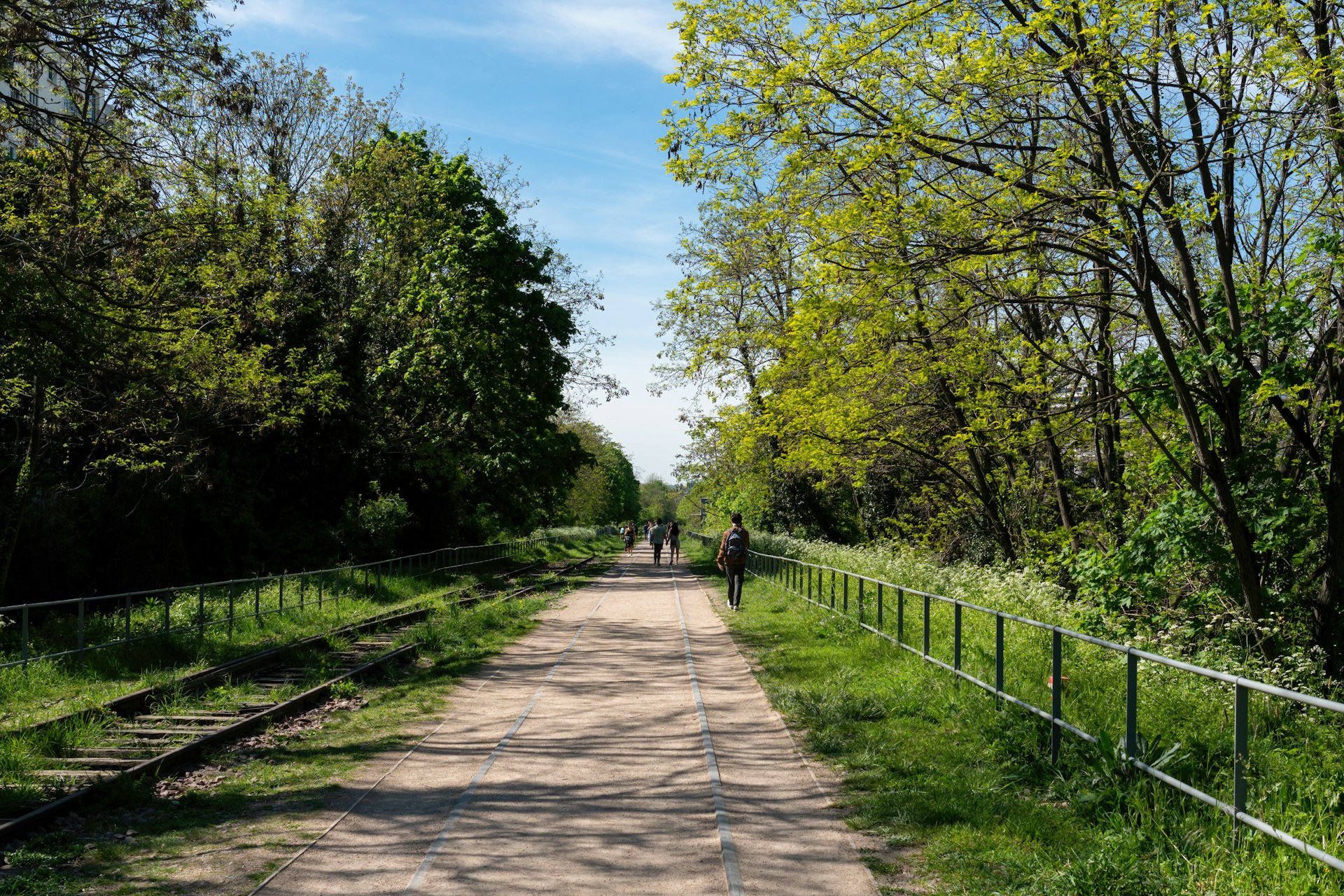
1. Explore Paris from its abandoned railway
Explore Paris from below and up above on its abandoned railway, La Petite Ceinture, which snakes around inner Paris. A 30km (19-mile) stretch of green space, it’s full of history and some of the city’s best street art. Built over 150 years ago, this urban railway – now an overgrown refuge for wildlife like foxes, as well as a playground for graffiti artists and urban explorers – is being slowly reclaimed by the city to turn it into a promenade similar to New York’s High Line.
The railway fell out of use completely by 1993 after being replaced by the Paris metro network and motorised vehicles. Today, it serves as a green oasis, with community-led projects like Jardins du Ruisseau, aimed at transforming parts of the railway into community gardens, and La REcyclerie and Hasard Ludique, which are hybrid food and arts hubs inside the railway’s former stations.
Planning tip: Parts of the railway are closed to the public so, before setting off, have a look at the map of open sections to plan accordingly. The guide also features detailed itineraries for each section.
Read more: How to navigate your way around Paris
2. Brush up on your art history at the Petit Palais
Visiting the Petit Palais in Paris has to be on every art and history enthusiast’s list because its brilliant permanent collections, which span several centuries, are totally free. Built for the 1900 World Expo, the museum, with its opulent architecture, features a semicircular garden, a beautifully decorated arcade, and intricate details like wrought-iron gates, majestic staircases and stained-glass windows, which make it worth the visit alone.
The Petit Palais’ collections trace works from the classical world and the Middle Ages through to the art nouveau and impressionist periods, with masterpieces by Claude Monet and Camille Pissarro. There's also an impressive gallery showcasing 19th-century sculptures by artists such as Louis-Ernest Barrias and Frédéric Auguste Bartholdi. There are regular (paying) temporary exhibitions that put a fresh spin on French history through art too. Make sure to keep some time aside for a snack or a coffee at the cafe in the museum’s circular central courtyard, laid out on a floor of blue-and-gold mosaic and surrounded by beautiful leafy gardens.
Planning tip: As with all museums in Paris, the Petit Palais gets quite crowded, so aim to go at opening time to get the huge spaces almost to yourself. Families with young children don’t have to queue – there is a dedicated entrance at the bottom of the stairs to the right.
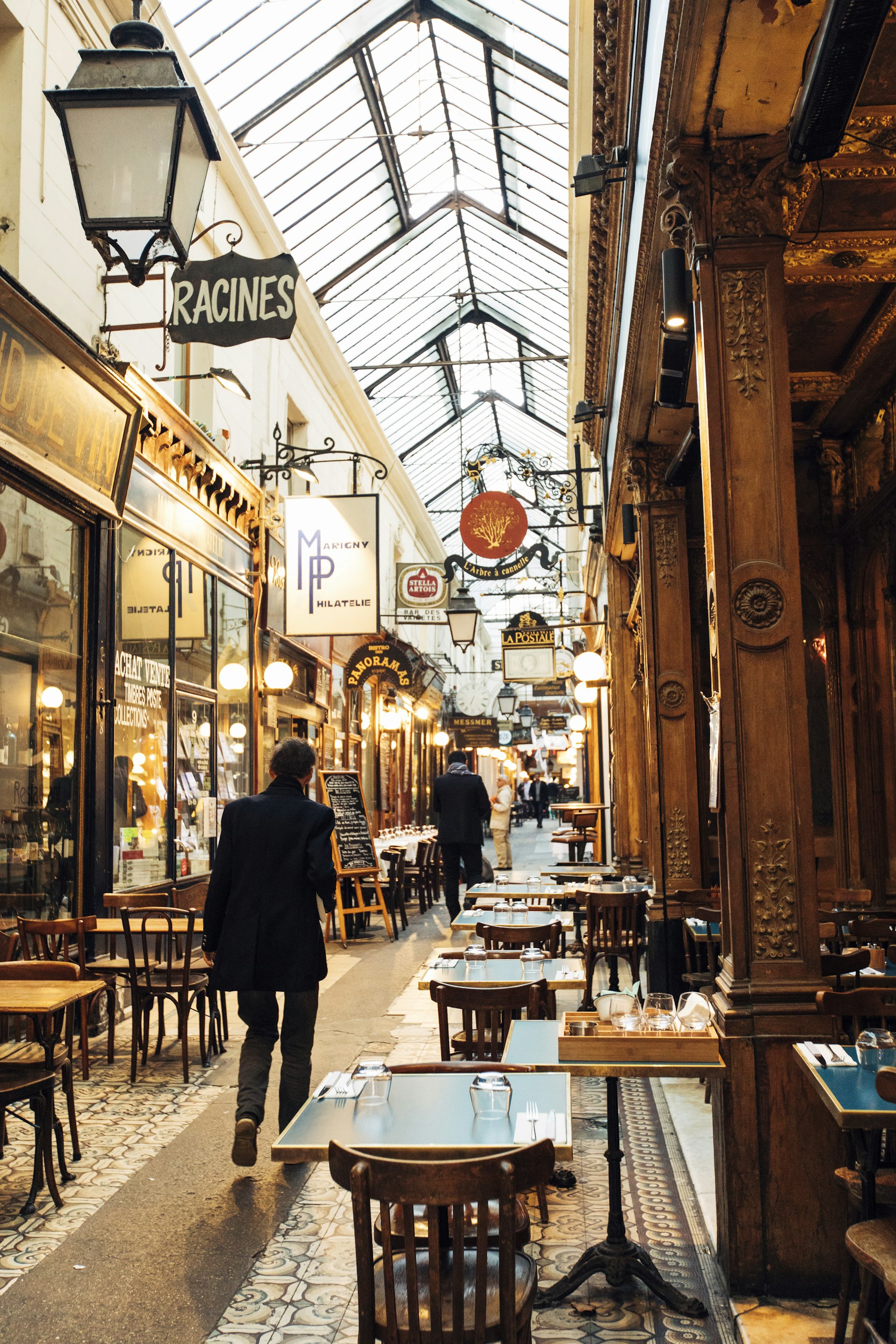
3. Travel back in time at these covered shopping arcades
Exploring Paris’ covered shopping arcades is a great way to see yet another side to the city and its unique history. These passages, dating back to the 18th and 19th centuries, are filled with quirky boutiques, old bookstores and places to eat. Despite most of these passages being demolished due to the rise of department stores, a handful have survived and are primarily located in the 2nd, 9th, and 10th arrondissements.
Read more: Our guide to the 20 arrondissements of Paris
Notable passages include the ornate Passage du Grand Cerf, the Galerie Vivienne with its mosaic floor, and Passage des Panoramas, the oldest arcade, known for its stamp shops and restaurants. Passage Choiseul has literary significance due to its association with writer Louis-Ferdinand Céline; Galerie Vero-Dodat is renowned for its antique stores; and Passage Brady, dubbed “Little India” for its South Asian eateries, should also be on your list. Each passage offers respite from the city bustle, making them perfect for a leisurely wander with or without children, come rain or shine.
Planning tip: There’s a smattering of great places to eat hidden in these arcades, including Canard et Champagne, Racines and Astair in the Passage des Panoramas, as well as Caves Legrand in Galerie Vivienne.
4. Swap blockbuster museums for crowd-free art galleries
If you're looking for a fresh, crowd-free way to dive into Paris’ rich art scene, gallery-hopping is where it's at. Forget the packed museums – Paris has over 1000 contemporary art galleries, each offering revolving shows of the biggest artists and up-and-coming talent for free. Wander through the Marais, Belleville, Saint-Germain-des-Prés, and even the north-east of Île-de-France, and you'll discover everything from cutting-edge contemporary works to street art.
The Marais probably has the highest concentration of galleries, including must-see Galerie Emmanuel Perrotin, Thaddeus Ropac (also check out their space in Pantin), Marian Goodman, Nathalie Obadia, Continua, Xippas, and Almine Rech, among many others. For photography buffs, Polka is the place to be, especially on exhibition opening nights when they showcase some of the world's top photographers, including Sebastião Salgado. Belleville also brims with over 150 artists who welcome visitors to their studios every May for the Bellville Artists' Open Studios event. Whether you're a connoisseur or just love to bask in the art world, these galleries are your ticket to a more laid-back look into Paris’ art scene without having to brave the queues and crowds of the big museums.
Planning tip: The best way to explore the city’s art galleries is with guide Alexandra Weinress, who organises bespoke art walks – as compact or detailed as you like – in both English and French.
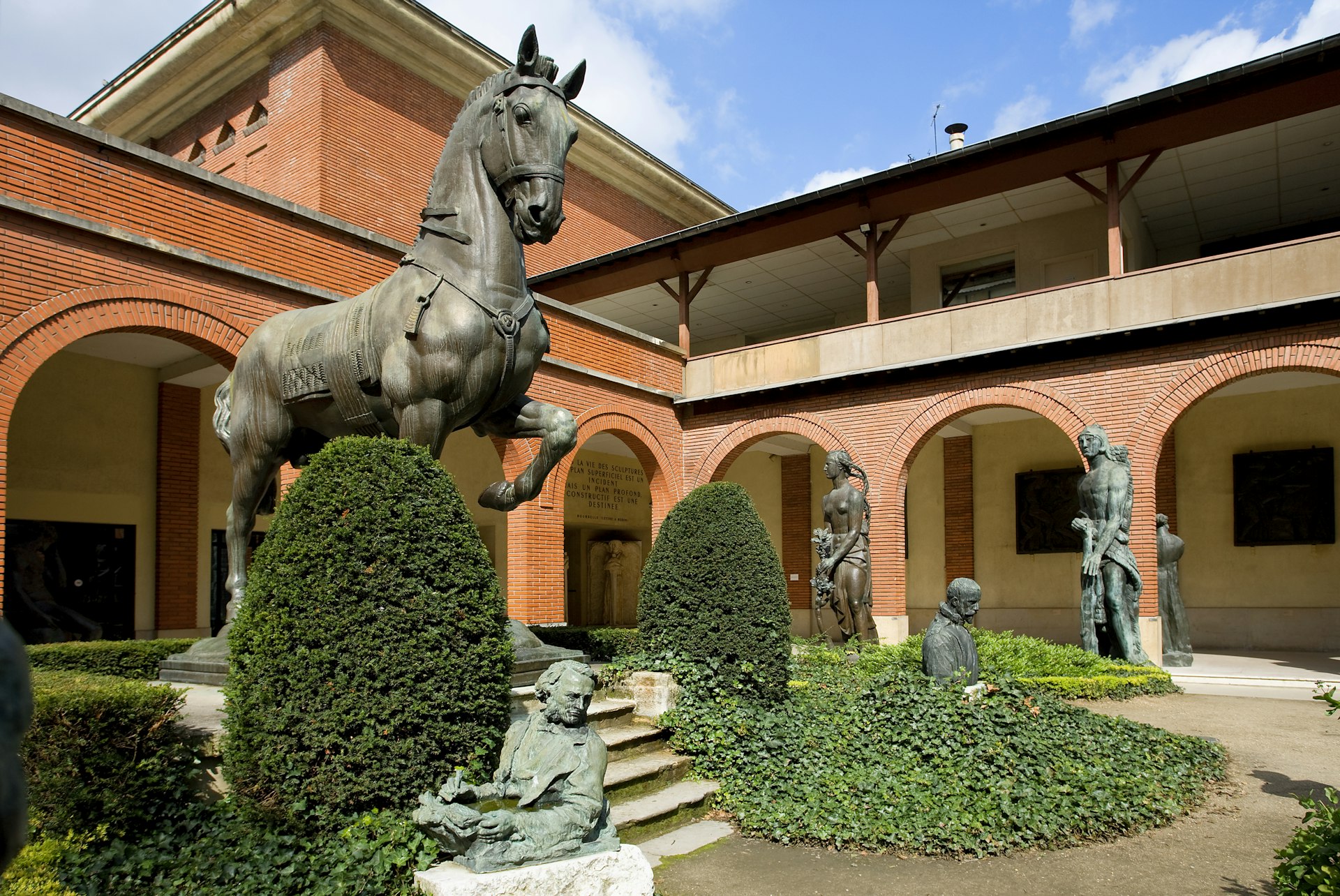
6. Wander a garden of sculptures in an artist’s home
Nope, it’s not Auguste Rodin, but his assistant, Antoine Bourdelle. Later in his life, Bourdelle was a teacher to Giacometti, and was a pioneering sculptor in his own right. His dramatic, expressive works bridged the gap between classical and modern art, and he significantly influenced early-20th-century sculpture with his innovative techniques and bold forms. The artist's former atelier and residence have been turned into the Musée Bourdelle, one of the most charming little museums in Paris.
Hidden in a side street just steps from busy Montparnasse station, Bourdelle's monumental bronze masterpieces are scattered around the quiet gardens that wrap around several workshop and exhibition spaces. One of the former workshops is now a minimalistic cafe with art deco accents – it's named Rhodia after the artist’s daughter, who also lived here. Tables are laid out in the shadows on a big terrace in summer as well as inside a lemon-yellow dining room, where you can lunch on ceviche and empanadas made by Latin American restaurant ISANA.
Planning tip: The museum is closed on Mondays and last entry is at 5:40pm. While you're in the area, climb up Montparnasse Tower – it's possibly the ugliest building in the city but it has the most magnificent 360-degree views of Paris. You’re also a seven-minute walk to the great-value, historic French restaurant Bouillon Chartier Montparnasse, with art nouveau interiors dating back to 1903.
5. Take a Seine river cruise on your birthday
While a cruise on the Seine might get a few eyerolls from locals or frequent visitors, it’s a truly special way to see the city, no matter how many times you’ve been. Trips vary from simple guided tours to floating dinner cruises and parties, and you usually have to pay for the experience. But if it's your birthday, the Vedettes de Paris company gifts you an hour-long guided cruise on the Seine free of charge. So grab your passport (as proof of your birthday) and head the office at the port, which is by the Eiffel Tower. You can choose between listening to the tour guide in English or French, or you can grab an audio guide with a wider variety of languages. You'll putter along the glittering water and past some of the city’s most remarkable landmarks, from the Grand Dame to the Musée D’Orsay and Notre Dame, and then back to the Eiffel Tower.
Planning tip: It’s not possible to book ahead, so you have to show up on the day (until 6:30pm). You can bring up to two guests but only the person whose birthday it is gets a free ticket.

7. Get lost in St-Ouen’s maze of flea markets
The Puces de St-Ouen is a must-visit spot, especially if you love a good treasure hunt. Hailed as one of the largest markets in the world, this sprawling bazaar just outside the city’s northern edge is a vintage-lover’s dream. Imagine winding through a maze of over 15 markets totalling about 2500 stalls and shops, each packed with everything from retro furniture and vintage clothing to rare antiques and quirky collectibles. A wooden spiral staircase from an old French mansion, anyone?
What makes the Puces de St-Ouen so special is the lively, eclectic vibe; it’s like stepping into a different world where you can chat with passionate vendors, stumble upon unusual items, and soak up the bohemian atmosphere. Whether you’re a seasoned collector or just love to browse, this place offers a fascinating glimpse into Parisian culture and history. You’ll leave with more than just a few fabulous finds.
Planning tip: The best time to go is on Saturday morning from 10am to really see the market in full swing. Half the fun is discovering a spot to eat, either hidden in the markets or on the main artery rue des Rosiers (the one in St-Ouen, not the Marais, for GPS users). My favourite is Le Coq d’Or, which has been serving excellent couscous for years.
8. Dance the night away at a mini club with cutting-edge acts
Like any capital city, Paris brims with nightlife venues, each one more expensive than the last – unless you know where to go. If you’re on a tight budget and prefer not to have to splurge on entrance fees, then try Supersonic and Panic Room, both in Bastille. Not only are they totally free to get into, but they host emerging bands and performers, giving them an edge you don’t usually get in run-of-the-mill nightclubs. At Panic Room (open Wednesday to Saturday), there’s a bar upstairs, while the nightclub is in the basement. There’s a happy hour from 7–10pm with €7 cocktails and €4.50 pints of Bud. Over at the equally industrial-looking Supersonic (open Sunday to Thursday), the rock gigs or DJ nights are free to get into before 11pm.
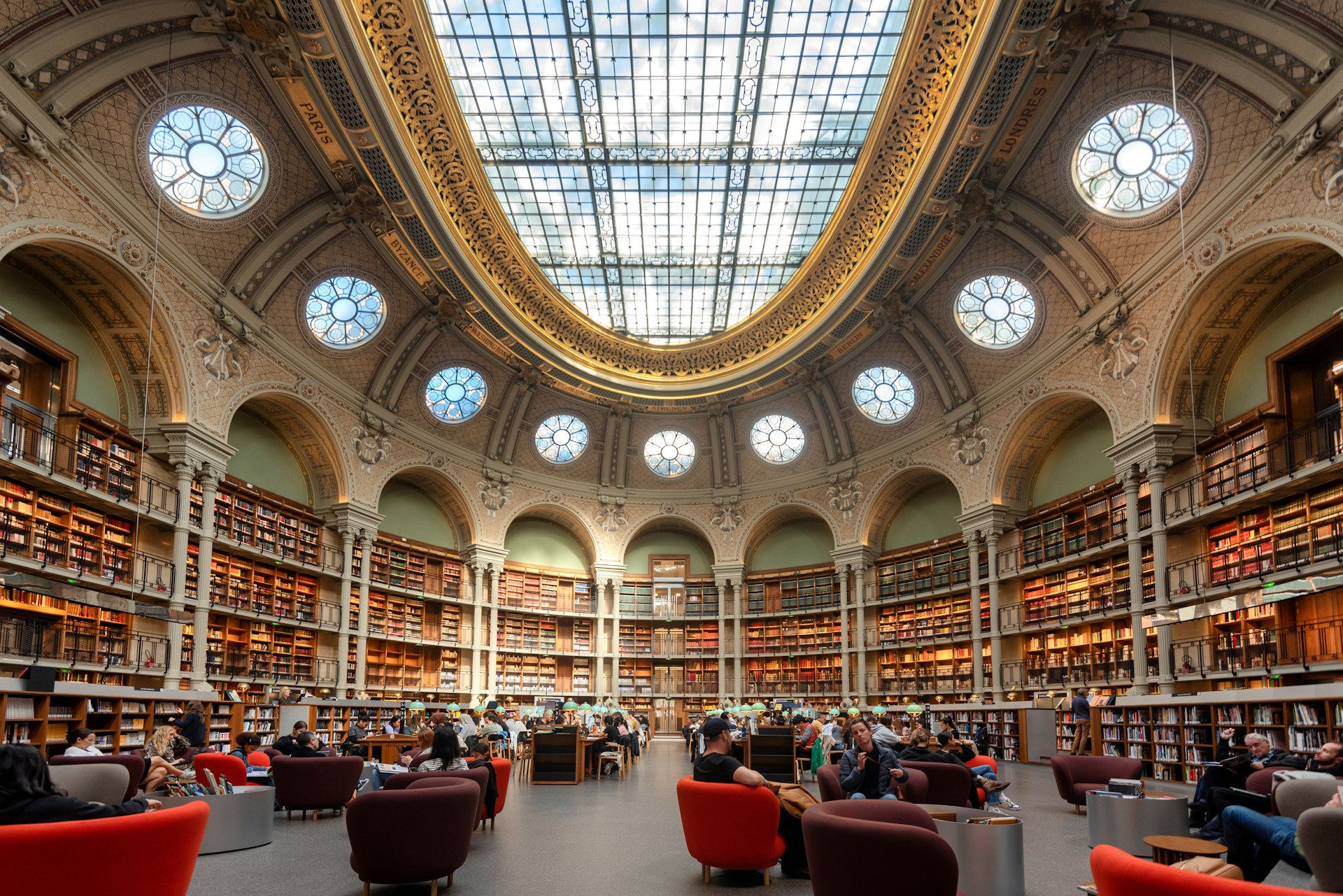
9. Do a digital detox at a library that’s not just for literary buffs
Tiptoeing inside the stillness of the Oval Room at the Richelieu site of the Bibliothèque Nationale de France (BNF), which was finished in 1932, is like finding a portal to the past. Shelves all the way up to the oval glass ceiling are stacked with over 20,000 books (many of which date back centuries) and 9000 comic books, all of which are available to all visitors. From ancient scrolls to modern classics, it's a bibliophile's paradise. Whether you're a history buff, a literature lover, or just someone looking for a cosy corner to get lost in a good book, this is the place to come. Grab a seat and soak in the magic.
Planning tip: The Oval Room is free and open to all visitors (closed Sundays). It’s located in the beautiful, historic neighbourhood of the Jardins du Palais Royal, which is worth a wander for the gardens and the old boutiques tucked in the arches.
10. Dabble in a spot of drag bingo
What could possibly add more cheer to a Sunday evening than a bit of free drag bingo? Every week at the Parc de la Villette, a flamboyant cast of queens leads you on a cheeky three-hour extravaganza of fun, top-notch pop and dance. It’s probably a good idea to have some grasp of French if you want to join in on the laughs or have a chance to win. Locals don’t come here for the prizes, though (an old Tarantino DVD, if you’re lucky), but for an atmosphere that’s the perfect remedy to Sunday blues. The show starts at 6pm, but get there at 5pm for a good seat.
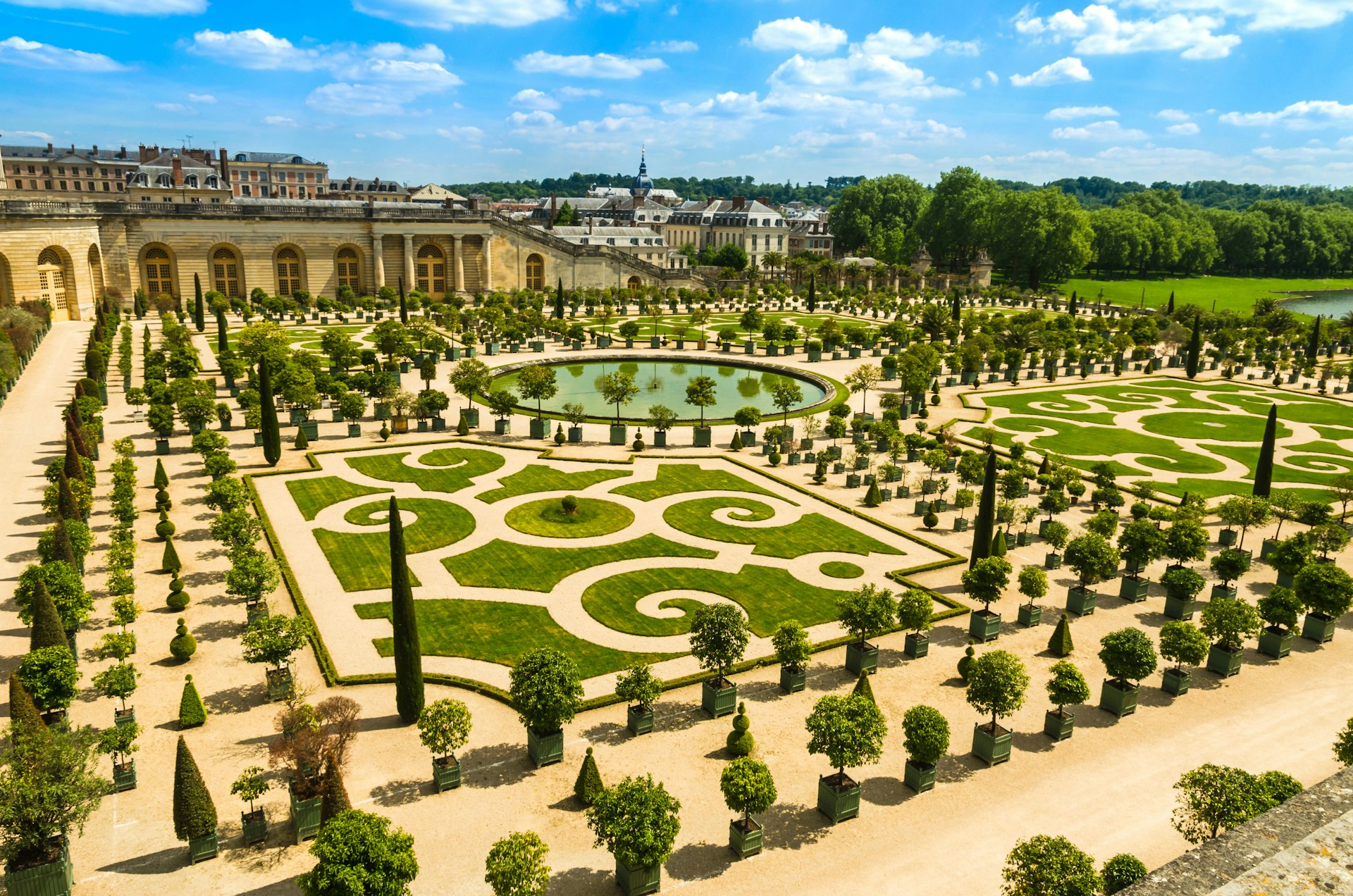
11. Find out why the Château de Versailles is more than a palace
The Château de Versailles isn't just a palace, it's a whole vibe. From the gilded-furniture-filled Hall of Mirrors, where kings once held court and raucous parties, to the meticulously manicured gardens with elaborate fountains, to Marie-Antoinette’s private hamlet far from Louis XVI’s watchful eye, every corner of Versailles tells a story.
Built in the 1600s, it is a UNESCO World Heritage Site and over 15 million people visit each year, making it one of the most popular attractions in the world. The gardens are free to visit all year round and the whole palace estate is completely free on the first Sunday of each month from November to March. Get there early as the queues can be long.
Planning tip: The suburb of Versailles, a 45-minute journey out of Paris city center, is known for being just as expensive as the capital, so make sure to buy something to eat at a bakery before arriving, which you can enjoy on the lawns in the warmer months. To take in the whole palace, set aside at least half a day.
Keep planning your trip to Paris:
- Explore beyond Paris with these day trips
- Check out these budget-friendly tips before you book
- Find the best time to visit Paris for your perfect vacation

